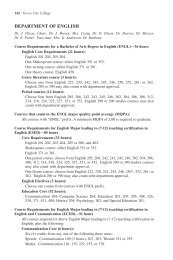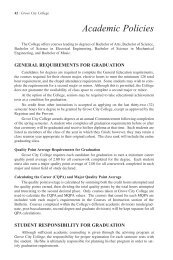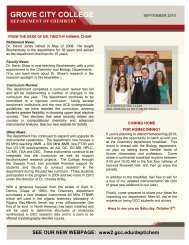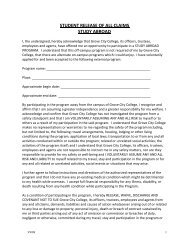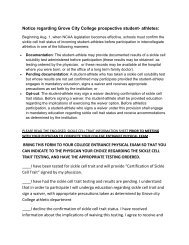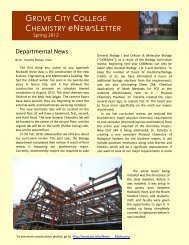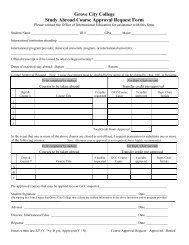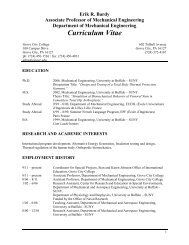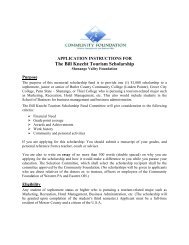A Review of Power-Generating Turbomachines - Grove City College
A Review of Power-Generating Turbomachines - Grove City College
A Review of Power-Generating Turbomachines - Grove City College
Create successful ePaper yourself
Turn your PDF publications into a flip-book with our unique Google optimized e-Paper software.
1.0 Steam Turbines<br />
1.1 Past<br />
The idea <strong>of</strong> using steam to produce work has been around for centuries, dating back to the time<br />
<strong>of</strong> Archimedes. It was not until the industrial revolution, however, that steam power started to<br />
realize its potential in the form <strong>of</strong> reciprocating engines and turbines. The first impulse type<br />
turbine was created by Carl Gustaf de Laval in 1883. This was closely followed by the first<br />
practical reaction type turbine in 1884, built by Charles Parsons. Parsons’ first design was a<br />
multi-stage axial-flow unit, which Westinghouse acquired and began manufacturing in 1895,<br />
while General Electric acquired de Laval’s designs in 1897. Since then, development has skyrocketed<br />
from Parsons’ early design, producing 0.746 kW, to modern nuclear steam turbines<br />
producing upwards <strong>of</strong> 1500 MW. 1 Today, steam turbines account for roughly 90% <strong>of</strong> electrical<br />
power generated in the United States. 2<br />
1.2 Current Design<br />
Steam turbines can be designed for either radial- or axial-flow. Modern steam turbines are<br />
predominantly axial-flow units, especially in large power plant applications. Steam and gas<br />
turbines are both used extensively in power plants to drive electric generators, but steam turbines<br />
are generally much larger in size. The rotors are generally multistage arrangements designed to<br />
handle high pressures in the first stages and lower pressures in the later stages. 3<br />
The two major axial-flow turbine stage configurations are impulse and reaction. The distinction<br />
is based upon relative pressure drop across the stage, where one stage consists <strong>of</strong> one row <strong>of</strong><br />
stationary blades/nozzles, and one row <strong>of</strong> rotating blades. A design is considered an impulse<br />
design if most or the entire pressure drop occurs across the stationary blade or nozzle (a 0%<br />
reaction). A reaction design experiences a pressure drop across both the stationary and rotating<br />
blades. If the pressure drop is split equally between the stationary and rotating blades, the<br />
reaction is 50%. 1 As the steam flows across a stage its kinetic energy does work upon the<br />
rotating blades. One tool important to the understanding <strong>of</strong> energy transfer from steam to rotor is<br />
the velocity triangle.<br />
Figure 1: a) Typical steam turbine stage 1 b) Velocity triangle for a reaction turbine c) Velocity<br />
triangle for an impulse turbine. 3<br />
In the impulse turbine design, the magnitude <strong>of</strong> the relative velocity <strong>of</strong> the steam remains<br />
unchanged (W2 = W3), but the absolute velocity exiting the rotor is greatly reduced (V3



